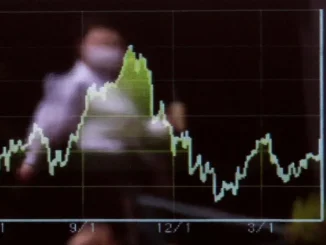
Consumer price increases cooled further in March, which is welcome news for the Federal Reserve, which made the challenging choice at its March meeting to continue with its federal funds rate hikes despite the failures of Silicon Valley Bank and Signature Bank.
The Consumer Price Index (CPI) rose by 5.0% in March, before seasonal adjustment compared to one year ago, a dramatic decrease from the 6.0% year-over-year jump posted in February, according to data released Wednesday by the Bureau of Labor Statistics (BLS).
This was the smallest 12-month increase since the year ending in May 2021 and the ninth consecutive month of declines. Indexes that contributed to the annual increase were food (+8.5%), motor vehicle insurance (+15.0%), household furnishings and operations (+5.6%), recreation (+4.8%), and new vehicles (+6.1%). Shelter also posted a significant increase, rising 8.2% year-over-year and accounting for over 60% of the total increase in the all items less food and energy index, which was up 5.6% compared to March 2022.
In contrast, the energy index was down 6.4% compared to a year prior.
“Inflation was down significantly in March, but we are still not down to the magic number the Fed is looking for. Housing costs are still a key driver of inflation, accounting for the largest part of the monthly increase in the CPI,” Lisa Sturtevant, the chief economist at Bright MLS, said in a statement.
The CPI also cooled on a month-over-month basis, posting a 0.1% monthly increase in March compared to a 0.4% monthly increase in February. Just like the annual index, the energy index was down month-over-month dropping 3.5%, while the index for shelter jumped 0.6% from the month prior as the indexes for rent and owners’ equivalent rent both rose 0.5% from a month prior.
Other indexes that posted monthly increases included motor vehicle insurance (up 1.2%) and airline fares (up 4.0%), while the indexes for medical care (down 0.3%), used cars and trucks (down 0.9%), and food at home (down 0.3%) all fell. This was the first time the food at home index posted a decline since September 2020.
Despite the slower pace of inflation, economist do not believe home buyers facing still elevated prices on top of higher mortgage rates will be out of the woods any time soon.
“The challenge with housing is that there are so many factors beyond the control of the Federal Reserve keeping housing costs high. High inflation led the Fed to raise interest rates, leading to higher borrowing costs, including making it more expensive to finance a home purchase. Higher mortgage rates have slowed demand by pricing some would-be buyers out of the market,” Sturtevant said. “Although home prices have fallen in some housing markets, the year-over-year price declines have generally been modest and affordability is a growing challenge, both on the ownership and rental side.”
Sturtevant recommends the government look into policies to slow price or rent growth, as she says higher interest rates alone will not ameliorate the situation.
“Rate hikes will not solve the housing affordability problem when lack of supply is what fueled rising home prices. What we need is more housing supply to bring down prices and make housing more affordable to more people,” Sturtevant said. “The Federal Reserve is not going to solve the problem, no matter how much some people hope that is the case. In reality, the solution is tough choices at the local level to reduce regulation and responsibly encourage more housing in the places that are best connected to jobs, transportation, services and amenities.”



